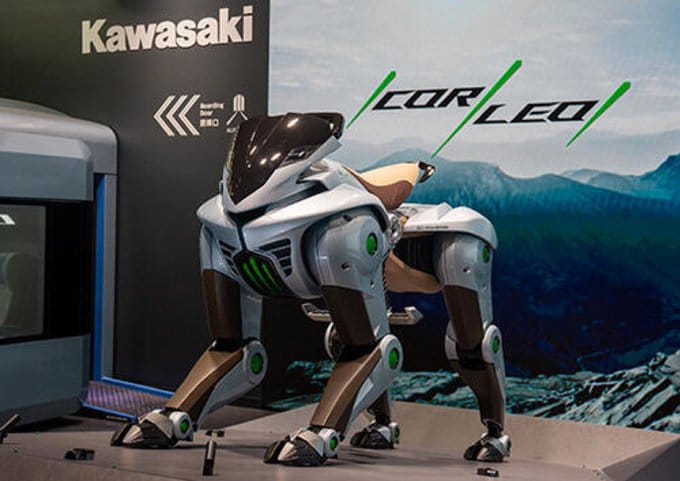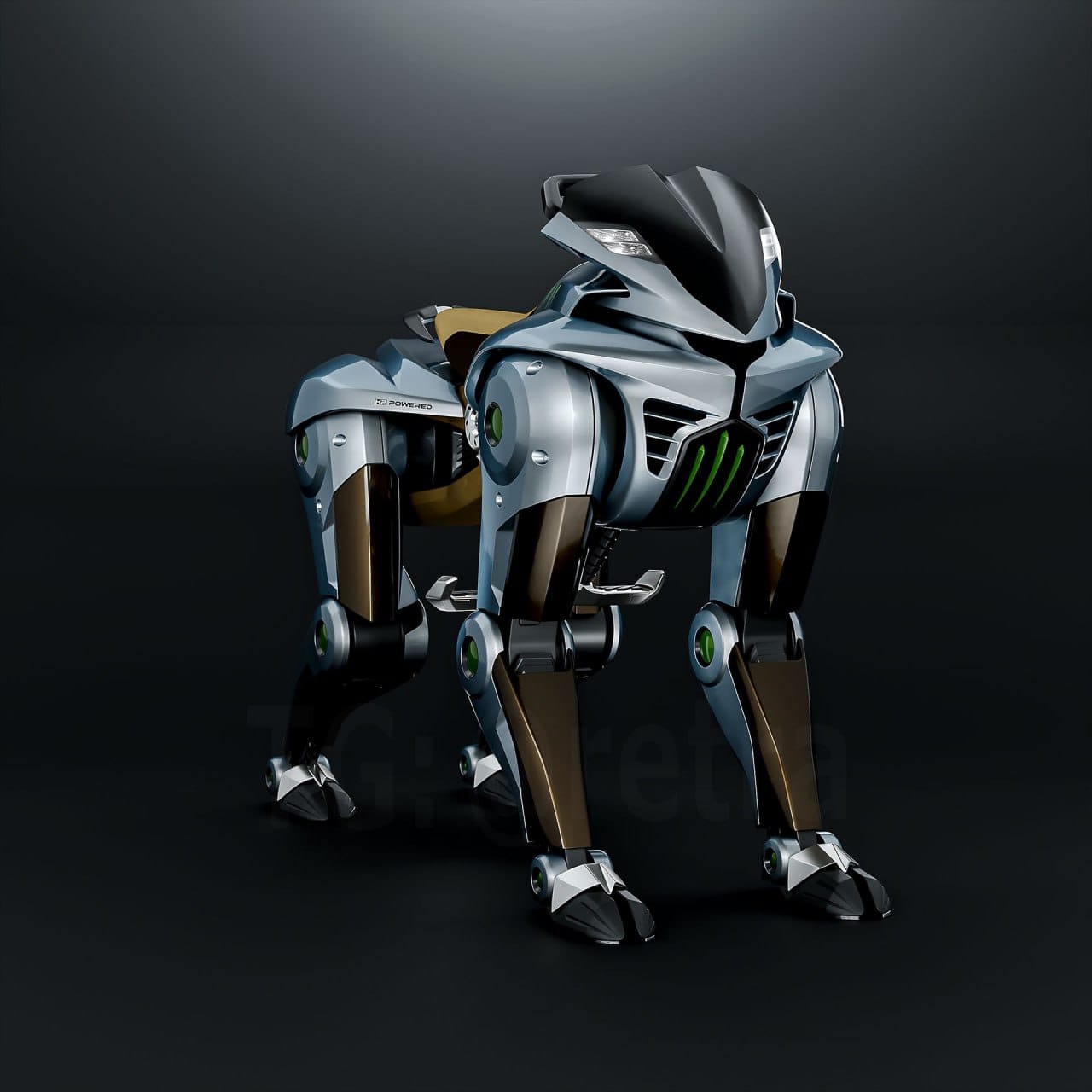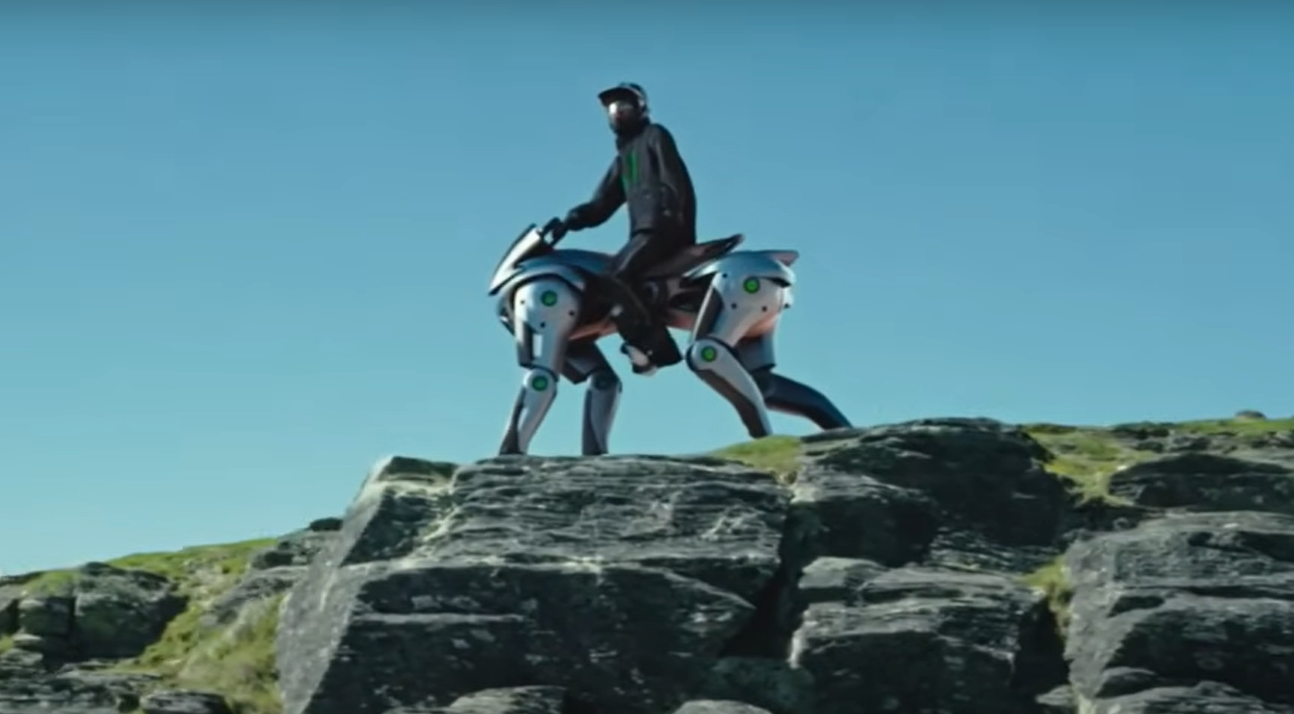
In a world racing towards sustainability and intelligent robotics, Kawasaki Heavy Industries has made a historic breakthrough with the unveiling of CORLEO, the world's first hydrogen-powered four-legged robot. This quadrupedal marvel doesn’t just represent a new chapter in robotics—it’s a leap into the future of clean energy, mobility, and artificial intelligence.
Combining hydrogen fuel cell technology, advanced AI algorithms, and state-of-the-art mechanical engineering, CORLEO stands as a bold statement of what’s possible when innovation meets purpose. In this article, we’ll explore the remarkable features of CORLEO, its implications for industry, defense, and everyday life, and how Kawasaki is redefining what robots can do.

A New Breed of Robot: What is CORLEO?
CORLEO is Kawasaki’s next-generation quadrupedal robot, designed to emulate the agility, balance, and endurance of animals like dogs or horses. Unlike typical robots powered by lithium batteries or conventional combustion engines, CORLEO runs on hydrogen fuel cells, offering zero-emission operation, longer runtimes, and higher power-to-weight efficiency.
The name “CORLEO” symbolizes "Core Logic Enhanced Organism", reflecting its intelligent decision-making architecture and adaptive real-world awareness. With its metallic exoskeleton, futuristic contours, and fluid movements, CORLEO is more than a machine—it's a digital lifeform born from science and vision.

The Power of Hydrogen: Why It Matters
1. Clean Energy for a Cleaner World
Hydrogen has long been hailed as the fuel of the future, and CORLEO is a pioneering step in putting that vision into motion—literally. Its hydrogen fuel cell system allows it to operate for hours without the emissions associated with gasoline or even electric-powered robots. The only by-product? Water vapor.
This clean energy model aligns with global efforts to reduce carbon footprints, particularly in sectors that rely on autonomous or remote machinery—such as agriculture, logistics, or disaster response.
2. Efficiency Beyond Electricity
While battery-powered robots are effective, they’re often limited by charge cycles, downtime, and battery degradation. Hydrogen fuel cells, on the other hand, offer instant refueling and greater longevity, making CORLEO ideal for long-duration missions in environments where electricity is scarce or inaccessible.
Advanced Mobility: Inspired by Nature
CORLEO’s movement is inspired by quadrupeds in the animal kingdom. Its four-legged design ensures exceptional stability, even on uneven terrain, steep inclines, and rocky landscapes. With precision joint actuation, dynamic weight shifting, and real-time terrain analysis, CORLEO walks, runs, climbs, and even navigates stairs with ease.
Kawasaki’s engineers used biomechanical studies to ensure that CORLEO can adapt its gait, balance in strong winds, and recover from stumbles—making it ideal for tasks in construction zones, mountainous areas, or disaster relief scenarios.
AI-Powered Intelligence: Next-Level Autonomy
Beyond its body lies CORLEO’s most powerful feature: its brain. Built upon Kawasaki’s proprietary NextMind™ AI platform, CORLEO boasts:
1. Real-Time Decision Making
Equipped with deep learning neural networks, CORLEO continuously learns from its environment. Whether it’s identifying obstacles, interpreting human commands, or rerouting its path, its AI processes thousands of data points per second.
2. Emotional and Social Awareness
CORLEO isn’t just logical—it’s socially aware. Using advanced NLP (Natural Language Processing) and facial recognition technology, it can interpret human emotions, respond to vocal tone, and interact with empathy. This makes it especially useful in elderly care, therapy, or customer service roles.
3. Swarm Integration and Collective AI
CORLEO units can coordinate with other robots or drones, enabling swarm intelligence. In a crisis zone, a fleet of CORLEOs can spread out, share data in real-time, and function as a cohesive unit to search for survivors, map terrain, or carry supplies.
Built to Endure: Materials and Engineering
1. Aerospace-Grade Materials
The robot’s chassis is constructed from aerospace-grade titanium alloy and carbon fiber composites, making it incredibly lightweight yet durable. It’s resistant to corrosion, extreme temperatures, and high-impact forces.
2. Waterproof and Dustproof (IP67 Rated)
CORLEO can operate in harsh environments including rain, snow, sand, and dust storms. Its waterproof casing allows it to wade through shallow rivers, and its internal electronics are shielded from moisture and grime.
3. Modular Design
From its detachable cargo racks to its interchangeable sensor arrays, CORLEO can be configured for a range of missions—from surveillance to delivery, rescue to entertainment.
Use Cases Across Industries
1. Search and Rescue Operations
In the aftermath of earthquakes, hurricanes, or forest fires, CORLEO can be deployed to search inaccessible zones, carry first aid, and relay information to command centers via 5G connectivity.
2. Agricultural Automation
CORLEO can walk through fields autonomously, identify plant health using multispectral sensors, and carry tools or water to targeted areas—reducing labor costs and improving precision farming.
3. Logistics and Delivery
Whether in urban environments or remote terrains, CORLEO can act as a last-mile delivery agent, transporting packages or medical supplies where traditional vehicles can’t reach.
4. Military and Defense
With stealthy movement, real-time intel, and rugged construction, CORLEO could be used in surveillance, perimeter patrol, or equipment transport in military zones.
5. Entertainment and Hospitality
CORLEO can also dance, perform tricks, or guide guests in theme parks and hotels, offering a futuristic customer experience—much like robotic mascots or intelligent guides.
CORLEO vs Other Quadrupeds: What Sets It Apart?
| Feature | CORLEO | Spot (Boston Dynamics) | ANYmal (ANYbotics) |
|---|---|---|---|
| Power Source | Hydrogen Fuel Cell | Lithium Battery | Lithium Battery |
| Runtime | 8–12 hours | 90 mins | 2 hours |
| Terrain Adaptation | Advanced | Moderate | High |
| Payload Capacity | 40+ kg | 14 kg | 10 kg |
| AI Capability | Emotion + Swarm AI | Basic Autonomy | Environmental AI |
| Modularity | High | Medium | Medium |
| Waterproof Rating | IP67 | IP54 | IP67 |
CORLEO outshines its rivals in power longevity, emotional intelligence, swarm coordination, and ruggedness, thanks largely to its hydrogen-based system and sophisticated AI.
Safety and Ethical Considerations
Kawasaki takes robotic ethics seriously. CORLEO has built-in safeguards to prevent harm to humans, including:
- Obstacle Avoidance Algorithms
- Fail-Safe Shutdown Systems
- AI Behavior Transparency Reports
- Encrypted Communication Channels
- Privacy Compliance with GDPR and international AI laws
Additionally, all CORLEO units undergo strict operational limits depending on their deployment—ensuring that they’re used for good, and not weaponized or abused.
The Road Ahead: Kawasaki’s Vision
CORLEO is just the beginning. Kawasaki envisions a future where hydrogen-powered robots support daily life, reduce human workload, and help mitigate climate change.
Next-Gen Goals Include:
- CORLEO-MINI: A smaller version for indoor use in households and hospitals.
- CORLEO-AERO: A flying drone hybrid with four legs and rotors.
- CORLEO-SWARM: A fleet-management software to control hundreds of CORLEOs at once.
- AI Co-Pilot Integration for collaborative tasks with humans in factories or labs.
By investing in clean robotics today, Kawasaki is creating an ecosystem of smart machines that enhance—not replace—human life.
CORLEO and the Global Push Toward Green Robotics
As the climate crisis grows more urgent, eco-conscious robotics are moving from trend to necessity. CORLEO represents a fusion of carbon neutrality and mechanical excellence. Its hydrogen engine produces zero emissions, and Kawasaki has already begun partnerships with hydrogen refueling station developers to support broader deployment.
Governments and environmental groups are praising CORLEO as a model for green tech adoption, and several nations are reportedly considering CORLEO as part of their sustainable smart-city plans.
Early Field Tests and Feedback
In 2024, prototype CORLEO units were field-tested in:
- Hokkaido (Snow Rescue Missions)
- California (Wildfire Zones)
- Dubai (Urban Delivery Trials)
- Kenya (Rural Agriculture Monitoring)
Feedback from these tests highlighted CORLEO’s resilience, autonomy, and adaptability—with field engineers praising its low noise profile, self-learning pathing, and fast deployment capabilities.
Public Reaction and Cultural Impact
When videos of CORLEO’s first public walk surfaced online, social media exploded. From tech influencers to AI ethicists, people were awestruck by its fluid movement, low hum from the hydrogen engine, and almost lifelike behavior.
Art and media have already begun to take inspiration, with CORLEO appearing in:
- Short films and documentaries
- Fashion runway tech shows
- Sci-fi video games and anime concepts
CORLEO is becoming a symbol of responsible future tech, combining awe with action.
Conclusion: A Giant Leap for Robotics and Sustainability
Kawasaki’s CORLEO isn’t just another robot—it’s a beacon of what’s possible. With its hydrogen-powered heart and AI-driven brain, it redefines the boundaries of what robotics can achieve, all while staying rooted in environmental responsibility.
From helping farmers grow more efficiently to saving lives in disaster zones, CORLEO is built for purpose, progress, and people. Its emergence marks the dawn of a new era—where robots walk among us not just with power, but with intelligence, emotion, and intention.
Whether you're a tech enthusiast, environmentalist, or futurist, CORLEO is a name to remember.
CORLEO is not just the future of robotics. It is the future—walking confidently on four legs, powered by the clean breath of hydrogen, and guided by a brain born of AI.


